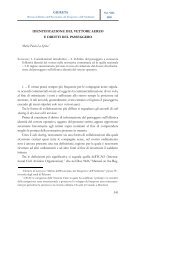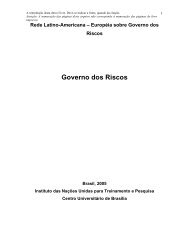Rome II and Tort Conflicts: A Missed Opportunity Abstract Contents
Rome II and Tort Conflicts: A Missed Opportunity Abstract Contents
Rome II and Tort Conflicts: A Missed Opportunity Abstract Contents
Create successful ePaper yourself
Turn your PDF publications into a flip-book with our unique Google optimized e-Paper software.
SYMEON C. SYMEONIDES ROME <strong>II</strong> AND TORT CONFLICTS<br />
One difference between traditional <strong>and</strong> modern PIL is the extent to which each<br />
considers the content of the substantive laws of the involved states before choosing<br />
the law that would govern the case at h<strong>and</strong>. In traditional PIL, the choice was based<br />
exclusively on the physical contacts of the involved states (“jurisdiction-selection”),<br />
46<br />
without regard to the content of their substantive laws. In contrast, in modern PIL,<br />
the choice is based not only on physical contacts but also on the content <strong>and</strong><br />
underlying policies of the laws of the contact states (“content-oriented law<br />
47<br />
selection”). Content-oriented law selection is easier when the court is not bound by<br />
statutory choice-of-law rules. When such rules exist, however, a content-oriented law<br />
selection is possible only to the extent these rules allow it. The question here is to<br />
what extent the rules of <strong>Rome</strong> <strong>II</strong> require jurisdiction-selection <strong>and</strong> to what extent they<br />
permit content-oriented law selection?<br />
Under <strong>Rome</strong> <strong>II</strong>, jurisdiction-selection is the norm <strong>and</strong> content-oriented law<br />
selection is a limited, often unintended, exception. The majority of the dispositive<br />
articles of <strong>Rome</strong> <strong>II</strong> designate the state whose law governs because of that state’s<br />
physical contacts rather than because of the content of its law. This alone is not a<br />
reason to criticize <strong>Rome</strong> <strong>II</strong>. After all, in most codified PIL systems, jurisdictionselecting<br />
rules are bound to outnumber content-oriented rules. Secondly, as<br />
48<br />
documented elsewhere, carefully crafted, narrowly tailored jurisdiction-selecting<br />
rules can achieve functionally sound results. For this to happen, however, the drafters<br />
must identify the various typical law-fact patterns <strong>and</strong> consider whether the<br />
application of a given state’s law produces an equally good result regardless of the<br />
content of that law. If the answer to this question is affirmative, a jurisdiction-<br />
49<br />
selecting rule would be acceptable. If the answer is negative, then one or more<br />
content-oriented rules should be drafted to accommodate the various patterns. One<br />
question explored later in this essay is whether the jurisdiction-selecting rules of<br />
<strong>Rome</strong> <strong>II</strong> meet this test.<br />
Before addressing this question, it is worth noting that <strong>Rome</strong> <strong>II</strong> contains<br />
several provisions that, directly or indirectly, permit consideration of the content of<br />
the substantive laws of the involved countries. These provisions can be divided into<br />
three categories:<br />
(1) traditional provisions that allow the court to refuse to apply the normally<br />
46. The term “jurisdiction-selection” was first coined by Professor Cavers. See David F. Cavers,<br />
A Critique of the Choice-of-Law Problem, 47 HARV. L. REV. 173 (1933).<br />
47. For a full discussion of these concepts, see Symeon C. Symeonides, American <strong>Conflicts</strong> Law<br />
at the Dawn of the 21st Century, 37 WILLAMETTE L. REV. 1, 46-60 (2000).<br />
48. See Symeonides, THE CHOICE-OF-LAW REVOLUTION 399-404.<br />
49. One example of such a rule is the common-domicile rule for loss distribution conflicts. As<br />
explained infra at text accompanying note 112, this rule produces good results not only when<br />
the law of the common domicile favors the victim, but also when it favors the tortfeasor.<br />
56 AMERICAN JOURNAL OF COMPARATIVE LAW (2008) PAGE 10 OF 46



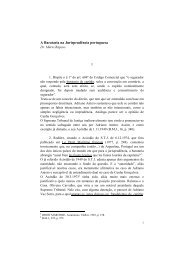

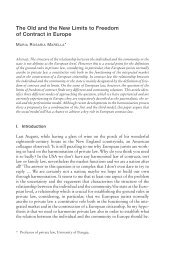

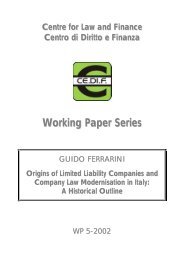
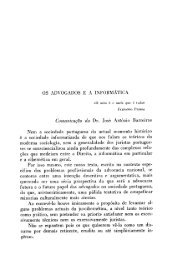
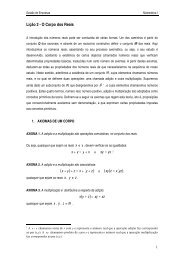

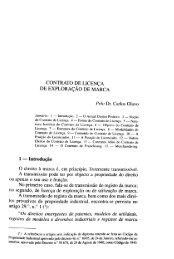
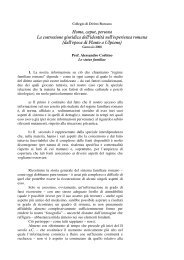
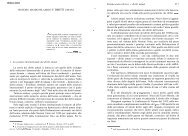

![Luigi Sapio Nozione di islām La parola “islām” [ ] è il mas.dar1 ...](https://img.yumpu.com/15836073/1/185x260/luigi-sapio-nozione-di-islam-la-parola-islam-e-il-masdar1-.jpg?quality=85)
